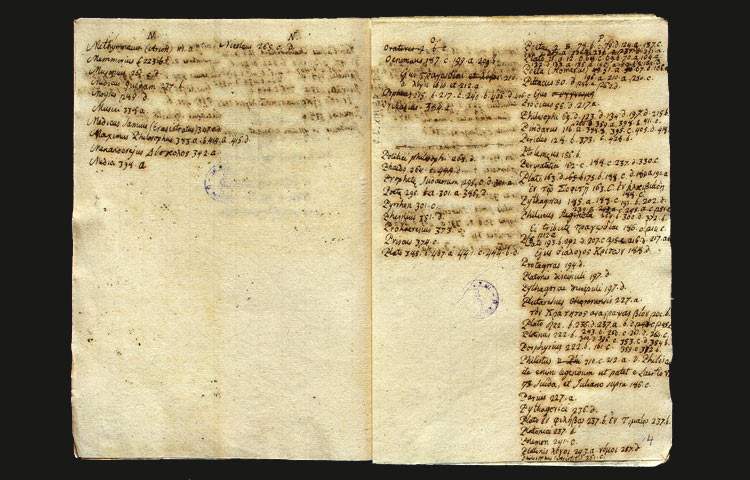An autograph juvenile manuscript by Giacomo Leopardi (Recanati, 1798-Naples, 1837) has been discovered in Naples, found in the Leopardian collection of the National Library of Naples. Dating in all likelihood from 1814, the youthful manuscript that went unnoticed, and therefore unpublished, was intercepted by Marcello Andria and Paola Zito, who edited it for publication by Le Monnier Università. The manuscript was published in the volume Leopardi and Giuliano imperatore. An unpublished note from the Neapolitan papers, which will be presented precisely in Naples at the National Library (Sala Rari) on Tuesday, May 3, at 4 p.m., with talks by Maria Iannotti, Giulio Sodano, Francesco Piro, Rosa Giulio, Silvio Perrella and Lucia Annicelli.
The unpublished book confirms the importance of the Neapolitan Leopardi collection, which is becoming more and more complete, making available to scholars an integral panorama of Giacomo Leopardi’s work. It is a “little notebook” consisting of four half-sheets, folded in the middle so as to obtain eight sides, bearing a long and dense alphabetical list of ancient and late ancient authors (about 160 headwords), each of which is followed by a series of numerical references (more than 550 in all). Here we are dealing with a writing by Leopardi as soon as he was 16 years old, an assiduous frequenter of his father’s library, who carries out an accurate and thorough perusal of Julian Emperor’sOpera omnia, resorting to Ezechiel Spanheim’s authoritative edition, which appeared in Leipzig in 1696.
James, who only the year before had begun to study Greek as a self-taught scholar, assiduously scoured the best specimens in his father’s library, and the autograph shows us that although very young he was already an able and inquisitive scholar and already had an accurate method of work, which was to be the constant characteristic of Leopardi’s path.
The years in which the young Leopardi approached the reading of Julian represent a significant stage in the reappraisal of the figure of the Apostate, long overshadowed by the almost unanimous condemnation of historians of the until the mid-sixteenth century and rediscovered in the eighteenth century by the Enlightenment (Montesquieu, Diderot, Voltaire) above all, but welcomed in Italy amidst attestations of esteem and declared hostility. References to the work of the Neo-Platonic philosopher Emperor will also recur later in Leopardi’s work: particularly in the Operette morali (in Filippo Ottonieri’s Detti memorabili ) and in the Zibaldone, in some philological exercises.
The volume published by Le Monnier delves into the meaning of the pairing of Giacomo Leopardi and the Apostate, in an interdisciplinary perspective through the essays by Marcello Andria, Daniela Borrelli, Maria Luisa Chirico, Maria Carmen De Vita, Stefano Trovato, and Paola Zito, who conduct their reflections on the historical-philosophical level from the fourth century AD to the Enlightenment and beyond, as well as on the philological level by investigating in the folds of a dense and significant lexical and conceptual fabric.
Pictured are two pages from the unpublished notebook.
 |
| Naples, a surprising early manuscript of Giacomo Leopardi discovered |
Warning: the translation into English of the original Italian article was created using automatic tools. We undertake to review all articles, but we do not guarantee the total absence of inaccuracies in the translation due to the program. You can find the original by clicking on the ITA button. If you find any mistake,please contact us.